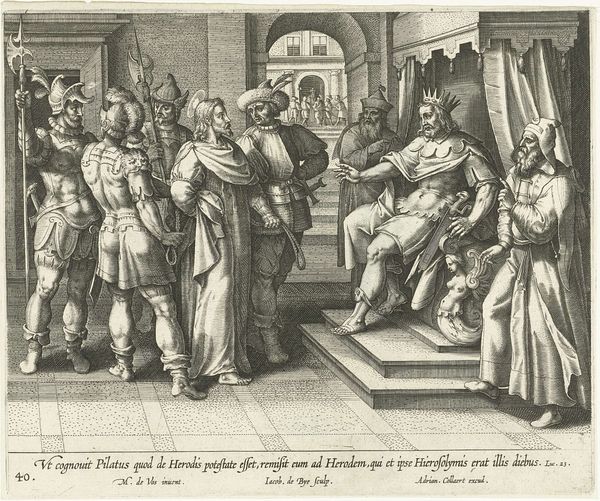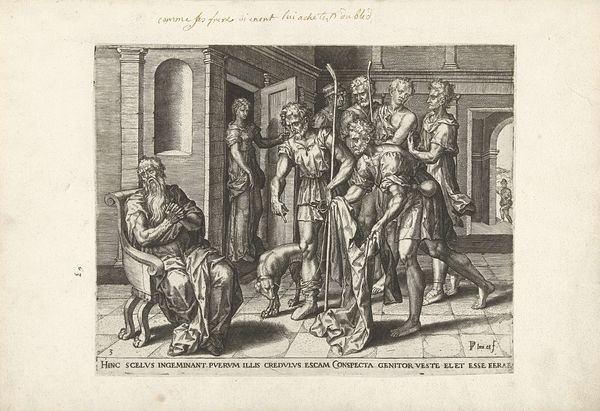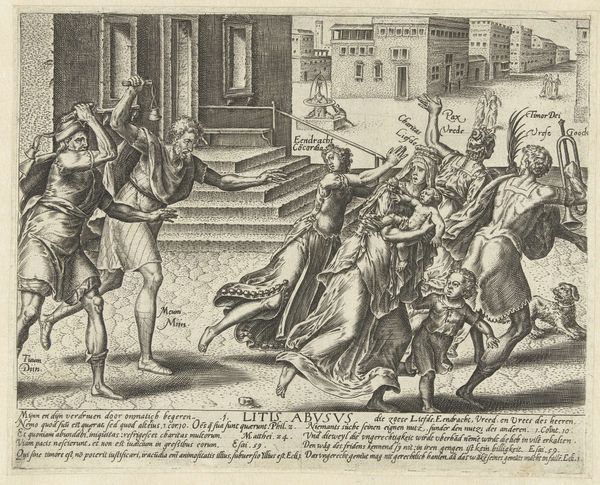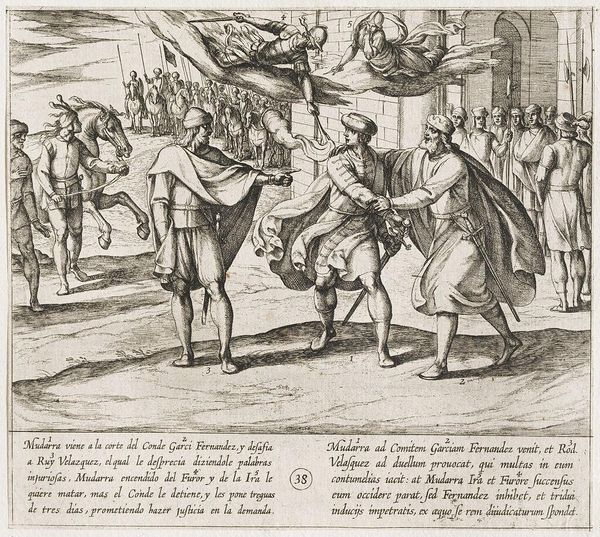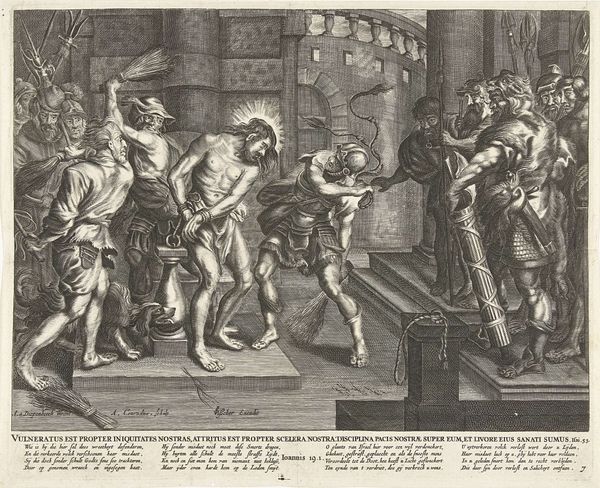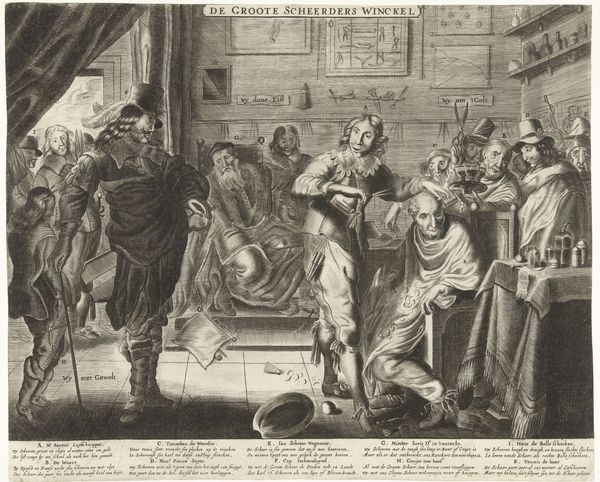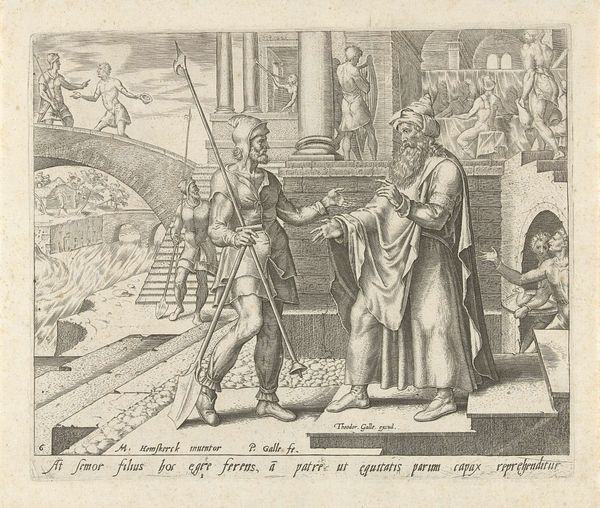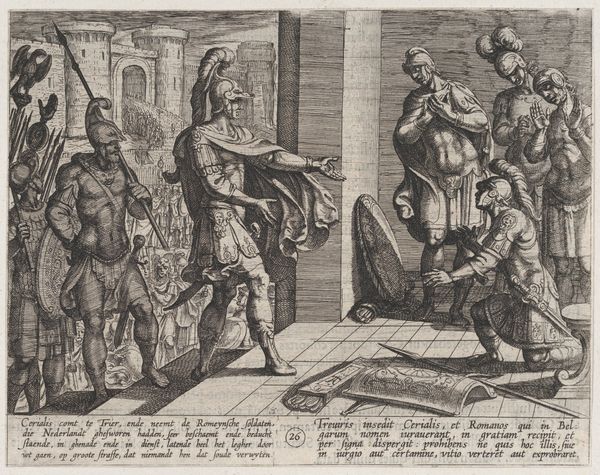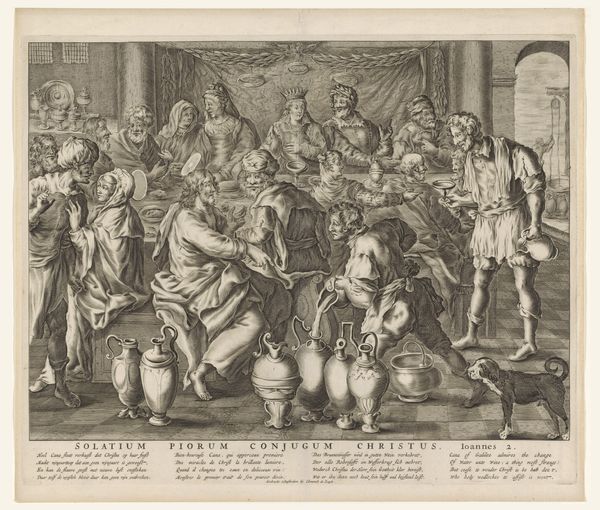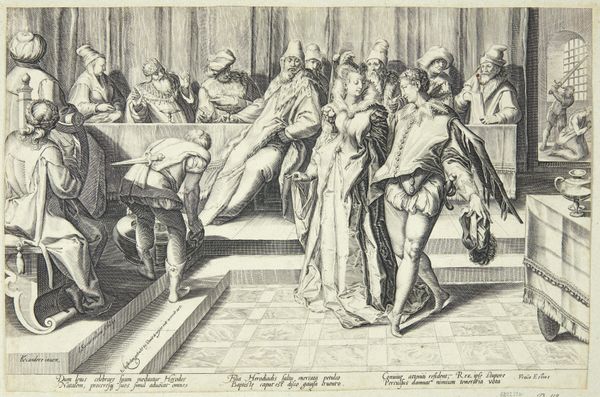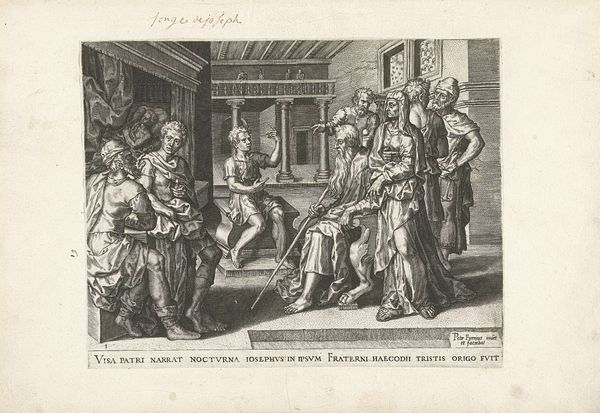
print, engraving
#
baroque
# print
#
figuration
#
history-painting
#
engraving
Dimensions: height 179 mm, width 220 mm
Copyright: Rijks Museum: Open Domain
Jan Collaert the younger made this engraving of the Crowning of Thorns after a design by Maerten de Vos in Antwerp around 1600. It shows the lead-up to the crucifixion of Christ, when Roman soldiers mock him by placing a crown of thorns on his head. Collaert worked in a city that was a stronghold of the Counter-Reformation. Visual artists were called upon to create imagery that would shore up religious belief after the Protestant Reformation. Scenes of Christ's suffering and humiliation were popular. But how do we explain the appeal of this cruel spectacle? Here, the sacred narrative is presented with a certain realism, yet it's also highly theatrical. Collaert’s print invites the viewer into the drama, encouraging a visceral response of pity and horror. To fully understand this image, we can consult the writings of theologians, sermons, and devotional tracts of the period to better understand how religious art was seen by its original audience. In doing so, we recognize that religious art is inseparable from the institutions that give it meaning.
Comments
No comments
Be the first to comment and join the conversation on the ultimate creative platform.
